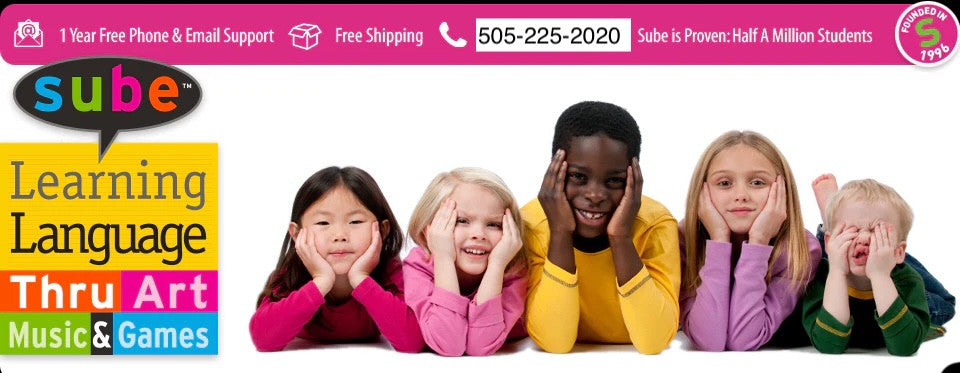
Students will…
- Use the letters of the Spanish or English alphabet to explore connections through a series of improv games and written projects.
- Play with letters, words, and full sentences in spontaneous and total physical response (TRP) exercises.
- Develop their ability to recognize connections using language, gestures, pattern making, writing, story telling, and (of course) play.
21st Century Skills:
Flexibility and adaptability, creativity and innovation, understanding the interconnections among systems
Grouping:
Individuals, Small Groups & Whole Class
Bloom’s Taxonomy:
Knowledge, Comprehension & Application
Materials:
- Basket and small squares of paper with one letter from the alphabet on each.
- Paper and pencils.
Preparation:
Prepare a brief discussion about how “Everything’s Connected!”
Start with something like...
Scientists now believe everything in the universe—all of the tiny, seemingly unrelated things in our world—are connected.
This may sound like a big concept, but you can bring it to life by simply talking about everything that had to happen just to get each of your students to school today.
Ask the question: “How’d you get here today? The answer is a lot more amazing than you think.”
Brainstorm with your students as many objects and actions (in the target language) they can think of: the bed they woke up in, the house or apartment they live in, the clothes they’re wearing, the breakfast they ate, their backpack, their car, the bus, the road, the gas, the stop lights, the school, the front doors, the hallway, the classroom, the desks, and even their chairs.
Ask them to think about how all these different objects and actions had to line up just right simply so they could be here.
Then tell them...
“And you know what, everything in our world is just like that. Everything’s connected!”
“Everything’s Connected!”: The Game
- Like charades, students alternate being actors and audience
- Select three students at a time to be “actors.” Your actors can play this game either as a team (if they need more support) or as individuals.
- If they’re a team, then the actors pick a random letter from the basket and whisper to each other three possible words that start with that letter.
- Once they’ve selected three words, the whole teams acts out each word one at at time. Feel free to help less proficient students by whispering, brainstorming, or even acting it out with them.
- If they’re able to play as individuals, then without discussing it, each actor independently acts out a word that begins with the selected letter. Playing independently makes the words even more random and fun.
- The audience’s role is to identify the three words—one at a time—and write them down on their papers or on the board in a triangle form.
- After all three words have been identified and written on the board, draw bubbles around them.
- Repeat the game alternating groups of actors until everyone in the class has had a chance to play. Each time a new groups acts out their words and the audience identifies them write their words on the board. Be sure to keep the different word groups separate.
- By the end of the game, you should have a handful or more of three-word groups written all over your board each of which should be arranged as a triangle.
“Everything’s Connected!”: The Activity
- For beginning students, select one of the three-word groups. For more advanced student, allow them to each select their own.
- Ask the entire class to “find a connection.”
- The best way to find connections is for your students to draw a picture that includes each word. And remember, the sillier or more random the picture is, the better.
- Once you’ve given your class some time to come up with their own connections and draw a picture, have them write a single, complete sentence using all three words. For younger and less proficient students, write this sentence as a class and help them compose it on the board. For older, more advanced students, have them write their sentence individually on paper.
- If your class is proficient enough to work individually, then as soon as a student has a complete sentence, encourage them to go to the board and write it out.
- Then, as a class, edit the sentence for correct spelling and grammar.
- Continue the game, alternating actors and members of the audience.
- Ask students what they thought of the activity. Is there something they would change to make it better? Did they improve in making connections after some practice, or was it too challenging?
